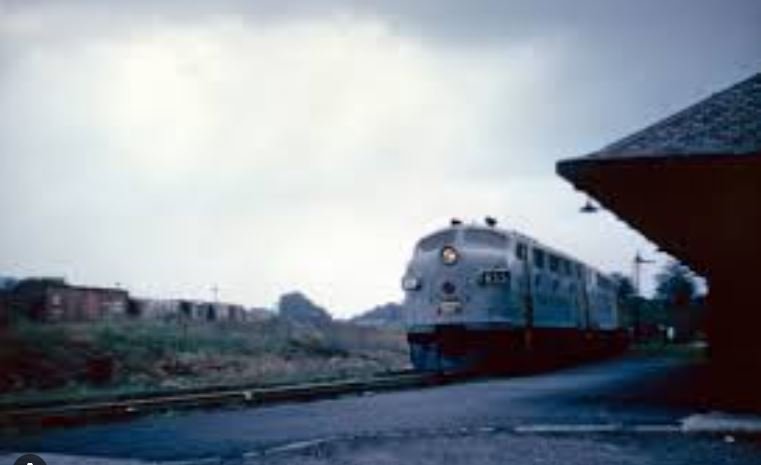The history of railroad development has played a significant role in shaping modern transportation and global commerce. From its early beginnings in the 19th century to the present, railroads have revolutionized the way people and goods travel across vast distances. The development of railroads contributed to industrial growth, urbanization, and the expansion of trade networks, creating new opportunities for economic development and social change.

Early Beginnings and Inventions
Railroad development began in the early 1800s with the invention of steam-powered locomotives. English engineer George Stephenson is often credited with developing the first practical steam engine, which paved the way for modern rail transportation. His famous locomotive, The Rocket, won a competition in 1829 for being the fastest and most efficient engine of its time, marking a turning point in railroad history.
The first railroads were designed to move goods and coal over short distances, providing an efficient alternative to horse-drawn carts. However, as the technology advanced, it became clear that railroads could transform long-distance travel. By the mid-19th century, rail networks had begun expanding across Europe and North America, connecting towns, cities, and countries in ways that had never been possible before.
The construction of the first passenger railroads was equally groundbreaking. The introduction of passenger trains allowed for faster and more comfortable travel, reducing the time it took to traverse long distances. Rail travel became a popular mode of transportation for both business and leisure travelers, accelerating the movement of people and facilitating economic growth.
The Expansion of Railroads in the 19th Century
The rapid expansion of railroads in the 19th century played a crucial role in transforming economies. In the United States, the construction of the Transcontinental Railroad, completed in 1869, connected the eastern and western parts of the country for the first time. This monumental project spurred the growth of new towns, facilitated westward expansion, and significantly reduced travel times across the continent.
Similarly, Europe saw the development of extensive rail networks that connected major cities and regions, promoting industrialization and trade. Railroads became essential to the transportation of raw materials, such as coal and iron, which fueled industrial production. Factories and businesses relied on railroads to distribute goods to markets, further accelerating economic growth.
In other parts of the world, railroads played a pivotal role in the development of colonies. Colonial powers, such as Britain and France, built railroads in their overseas territories to transport natural resources and connect inland regions to ports. These railroads had a lasting impact on the economic and social structures of the countries where they were built.
Technological Advancements and Electrification
The history of railroad development also includes significant technological advancements that improved efficiency and safety. One of the most important innovations was the electrification of railways. In the late 19th and early 20th centuries, electric trains began replacing steam-powered locomotives in urban areas and on long-distance routes. Electric trains were faster, cleaner, and more reliable, transforming the way people traveled within cities and across countries.
Other technological innovations during this period included the development of automatic signaling systems, which improved safety by reducing the risk of collisions. Innovations in track design, train brakes, and train cars further enhanced the performance of railroads, making them more efficient and capable of handling higher volumes of passengers and freight.
Railroad Development in the 20th Century
In the 20th century, railroads continued to evolve, especially with the rise of high-speed rail systems. Japan’s introduction of the Shinkansen (bullet train) in 1964 marked the beginning of high-speed rail, transforming travel by allowing trains to reach speeds of over 200 miles per hour. This innovation set the stage for the development of high-speed rail networks in Europe and, later, in other parts of the world.
The expansion of high-speed rail transformed intercity travel, providing passengers with a fast, efficient, and environmentally friendly alternative to cars and airplanes. Countries such as France, Germany, and China quickly followed Japan’s lead by developing their own high-speed rail networks, further advancing the global rail industry.
Throughout the 20th century, railroads remained essential to freight transportation. In the United States and many other countries, railroads were the backbone of industrial and agricultural supply chains, moving bulk goods such as coal, steel, grain, and automobiles across long distances.
Modern Railroads and Future Trends
Today, railroads continue to play a crucial role in global transportation, with a focus on sustainability and technological innovation. Many countries are investing in the modernization of rail infrastructure to make rail transportation faster, greener, and more efficient. The shift toward electric and hydrogen-powered trains is helping reduce carbon emissions and improve energy efficiency in the rail sector.
Moreover, the integration of digital technologies, such as automated train control systems and smart rail networks, is making rail transportation safer and more reliable. The future of rail development includes the potential for autonomous trains, magnetic levitation (maglev) systems, and even hyperloop technology, all of which promise to further revolutionize rail travel.
Conclusion
The history of railroad development is a testament to the transformative power of innovation. From its early beginnings with steam locomotives to the rise of high-speed and electric trains, railroads have continuously shaped the way people and goods travel across the world. As rail technology continues to evolve, the future promises even greater advancements in sustainability, speed, and efficiency, ensuring that railroads remain a vital part of the global transportation landscape.



